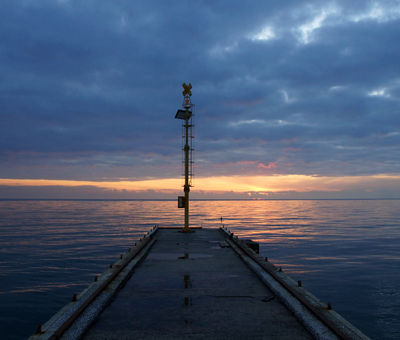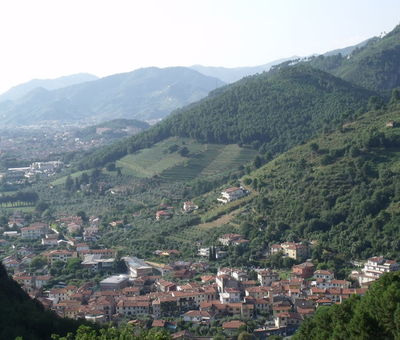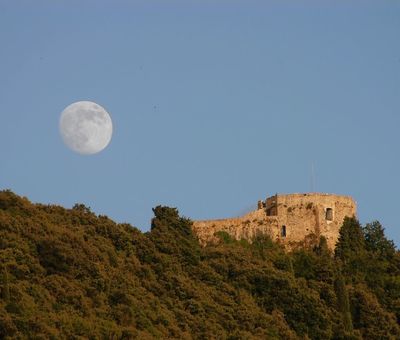The town without a centre
Ten thousand inhabitants and eighteen hamlets. That's the beauty of Montignoso, the town that
doesn't have a centre. To visit it, you have to travel up and down the streets
that climb from the sea of the Cinquale to the 800 metre peak of Mount
Pasquilio, dominated by Monte Corchia,
once the site of marble quarries. And where is the municipality? In Piazza,
not even one of the most populated hamlets, within Villa Schiff which belonged to the historic Giorgini family. The
fact that the municipality is not based in the most populated or even the most
beautiful hamlet sums up the uniqueness of Montignoso, it is a geographically
diverse territory with a double soul.
We pass from the heat of the crowded beaches to the freshness of the pine and
chestnut woods, filled with foxes and buzzards. In Montignoso, you can find dwarf
ferns which is the only place in the Mediterranean where they can live. There
are also birds such as the Knight of Italy and the riparian swallow. On one
side it borders with the VIP seaside resorts of Forte dei Marmi, and on the other there is a spectacular view where
mountains and sea come together, featuring the magnificent Monte Pasquilio. On clear days, you can even spot the Tuscan
Archipelago and Corsica in the background.
Mino Maccari among the partisans on the Gothic Line of the Apuan
Many have fallen in love with Versilia and
celebrated it through art. Pier Paolo Pasolini referred to it in ‘Le ceneri di
Gramsci’, Gabriele D'Annunzio in ‘L 'Alcyone’ and then again, Attilio
Bertolucci and Ardengo Soffici, who died a little further on, in Vittoria
Apuana. Many artists have chosen it, and not just for a golden holiday. The
Sienese painter Mino Maccari wanted to live here in his later years and moved
to Cinquale, where he built a house surrounded by greenery. During the
Second World War, Maccari refused to take service under the Republic of Salò
and joined the partisans of Montignoso. The Gothic Line crossed Monte
Pasquilio, it was the scene of battles and today guardian of testimonies.
Maccari is buried in these lands, in the cemetery of San Vito.
The miracle of the deer that delineates a border
Every place has its legends and traditions.
Montignoso has a rich collection. The most told tale is that of ‘the deer’ that
tells of how a deer jumped while escaping a hunter, and thanks to the Madonna,
leaped beyond the Aurelia. The miraculous jump delineates the historic boundary
between Lucca and Massa. The night of San Vito marked a rite of
tradition when the young people of the country "stole" anything the
villagers left unattended. The stolen goods were piled up in piazza del Comune,
where the next morning the rightful owners could recover them. The smirking “thieves”
lined up in the piazza or along the wall of the Cardinals' garden. But the most
poignant tradition is certainly that of the Pefana, a historic tradition
that takes place on the eve of the Epiphany. In the past, small processions of
young people covered with cloaks, hats and masks travelled the streets of the
villages with noise-makers and bells. They knocked on the doors of the houses
offering sweets and other small gifts to the children. In return they received
hot drinks without uttering a word.







